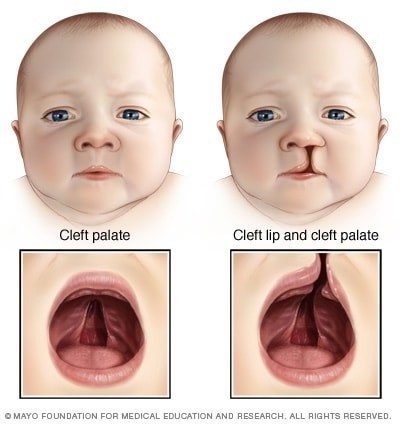A nurse is caring for a 6-month-old infant who is postoperative following a myringotomy. Which of the following pain scales should the nurse use to determine the infant's pain level?
Oucher
FLACC
FACES
Visual Analog Scale
The Correct Answer is B
Choice A: The Oucher pain scale is not suitable for a 6-month-old infant, as it is designed for children aged 3 to 13 years who can point to pictures of faces that match their pain level. A 6-month-old infant cannot communicate verbally or point to pictures.
Choice B: The FLACC pain scale is suitable for a 6-month-old infant, as it is designed for infants and children aged 2 months to 7 years who cannot verbalize their pain. The FLACC pain scale assesses five behavioral indicators of pain: face, legs, activity, cry, and consolability. Each indicator is scored from 0 to 2 based on the observation of the nurse. The total score ranges from 0 to 10, with higher scores indicating more pain.
Choice C: The FACES pain scale is not suitable for a 6-month-old infant, as it is designed for children aged 3 years and older who can select a face that matches their pain level. A 6-month-old infant cannot communicate verbally or select a face.
Choice D: The Visual Analog Scale (VAS) is not suitable for a 6-month-old infant, as it is designed for adults and older children who can mark a point on a line that represents their pain level. A 6-month-old infant cannot communicate verbally or mark a point on a line.
Nursing Test Bank
Naxlex Comprehensive Predictor Exams
Related Questions
Correct Answer is A
Explanation
Choice A: Encouraging the parents to rock the infant is an appropriate action for a nurse to take, as it can provide comfort, security, and bonding for the infant who is recovering from surgery. Rocking can also soothe the infant's pain and distress and promote sleep and relaxation.
Choice B: Administering blood thinners as needed for pain is not an appropriate action for a nurse to take, as blood thinners are not analgesics and can cause bleeding complications in an infant who is postoperative. Blood thinners are medications that prevent or reduce blood clotting, which can increase the risk of hemorrhage or hematoma. The nurse should administer analgesics, such as acetaminophen or ibuprofen, as prescribed by the provider for pain relief.
Choice C: Positioning the infant on her abdomen is not an appropriate action for a nurse to take, as it can cause pressure or trauma to the surgical site and increase the risk of infection or dehiscence. Positioning the infant on her abdomen can also impair the infant's breathing and oxygenation and increase the risk of sudden infant death syndrome (SIDS). The nurse should position the infant on her back or side with her head elevated and supported.
Choice D: Offering the infant a pacifier is not an appropriate action for a nurse to take, as it can cause suction or friction on the surgical site and increase the risk of infection or dehiscence. Offering the infant a pacifier can also interfere with the infant's feeding and nutrition and cause nipple confusion or preference. The nurse should avoid giving the infant anything in her mouth except for a bottle or breast with a special nipple that does not touch the surgical site.

Correct Answer is A
Explanation
Choice A:In actual practice, log rolling is typically done every 2 hoursto align with standard nursing protocols for preventing complications such as pressure injuries, maintaining skin integrity, and ensuring patient comfort. Repositioning every 2 hours also helps promote better circulation and reduces the risk of complications like pneumonia and deep vein thrombosis (DVT).
as a unit without twisting or bending the spine. The nurse should use a draw sheet and at least two other staff
members to assist with log rolling.
Choice B: This intervention is incorrect, as keeping the head of the bed at a 30-degree angle can cause flexion of the spine and compromise spinal alignment. The head of the bed should be kept flat or slightly elevated, depending on the provider's orders and the client's comfort. The nurse should avoid raising or lowering the head of the bed without checking with the provider first.
Choice C: This intervention is unnecessary, as placing the client in protective isolation is not indicated for a client who is postoperative following scoliosis repair with Harrington rod instrumentation. Protective isolation is used for clients who have compromised immune systems and are at high risk of acquiring infections from others, such as transplant recipients, cancer patients, or patients receiving immunosuppressive therapy. The nurse should follow standard precautions and surgical site care to prevent infection in this client.
Choice D: This intervention is optional, as initiating the use of a PCA pump for pain control may or may not be appropriate for a client who is postoperative following scoliosis repair with Harrington rod instrumentation. A PCA pump is a device that allows the client to self-administer a preset dose of analgesic medication by pressing a button. A PCA pump can provide effective and individualized pain relief, but it requires careful monitoring and education. The nurse should assess the client's pain level, preference, and ability to use a PCA pump and consult with the provider before initiating it.
Whether you are a student looking to ace your exams or a practicing nurse seeking to enhance your expertise , our nursing education contents will empower you with the confidence and competence to make a difference in the lives of patients and become a respected leader in the healthcare field.
Visit Naxlex, invest in your future and unlock endless possibilities with our unparalleled nursing education contents today
Report Wrong Answer on the Current Question
Do you disagree with the answer? If yes, what is your expected answer? Explain.
Kindly be descriptive with the issue you are facing.
